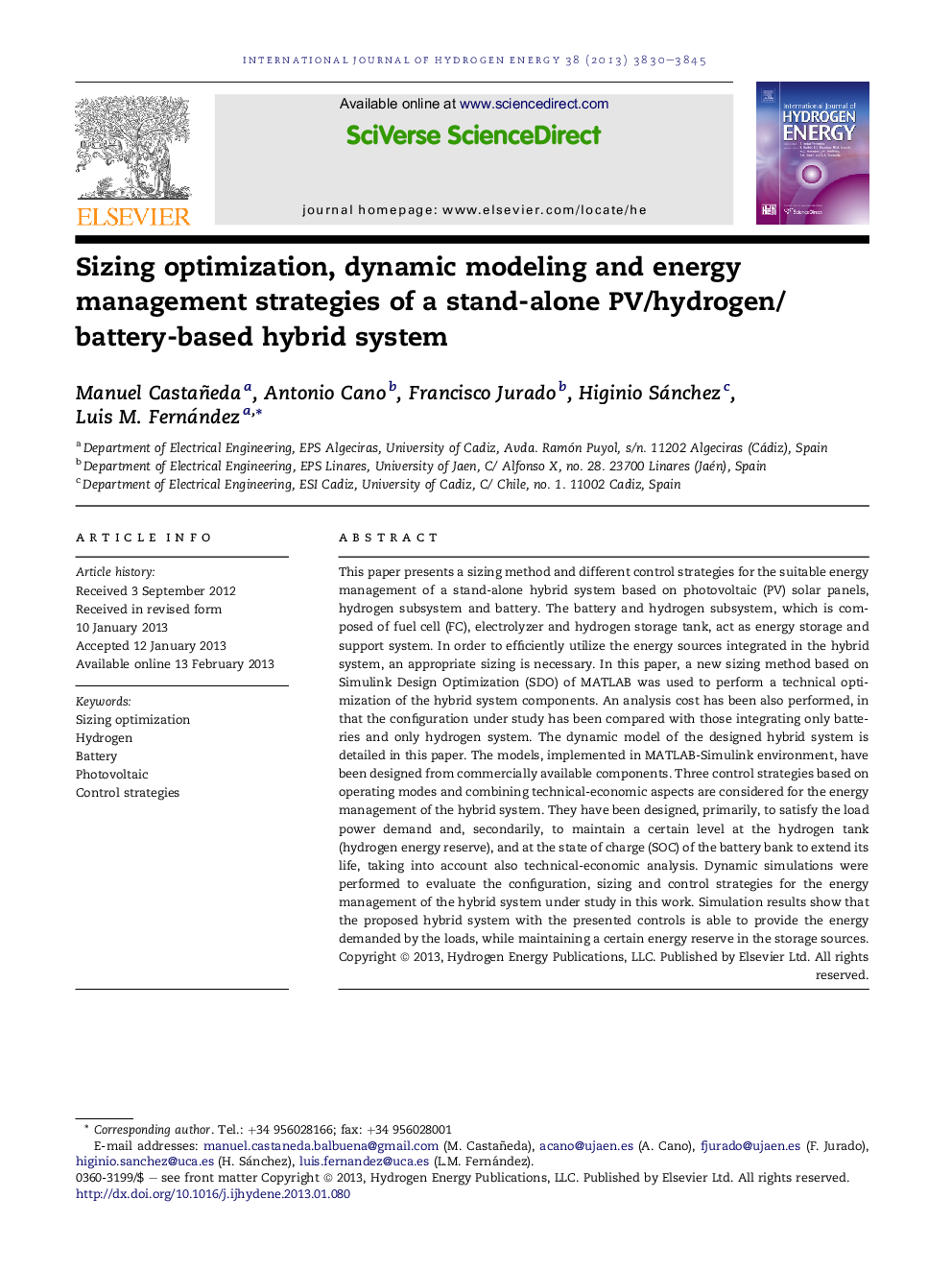| Article ID | Journal | Published Year | Pages | File Type |
|---|---|---|---|---|
| 1281845 | International Journal of Hydrogen Energy | 2013 | 16 Pages |
This paper presents a sizing method and different control strategies for the suitable energy management of a stand-alone hybrid system based on photovoltaic (PV) solar panels, hydrogen subsystem and battery. The battery and hydrogen subsystem, which is composed of fuel cell (FC), electrolyzer and hydrogen storage tank, act as energy storage and support system. In order to efficiently utilize the energy sources integrated in the hybrid system, an appropriate sizing is necessary. In this paper, a new sizing method based on Simulink Design Optimization (SDO) of MATLAB was used to perform a technical optimization of the hybrid system components. An analysis cost has been also performed, in that the configuration under study has been compared with those integrating only batteries and only hydrogen system. The dynamic model of the designed hybrid system is detailed in this paper. The models, implemented in MATLAB-Simulink environment, have been designed from commercially available components. Three control strategies based on operating modes and combining technical-economic aspects are considered for the energy management of the hybrid system. They have been designed, primarily, to satisfy the load power demand and, secondarily, to maintain a certain level at the hydrogen tank (hydrogen energy reserve), and at the state of charge (SOC) of the battery bank to extend its life, taking into account also technical-economic analysis. Dynamic simulations were performed to evaluate the configuration, sizing and control strategies for the energy management of the hybrid system under study in this work. Simulation results show that the proposed hybrid system with the presented controls is able to provide the energy demanded by the loads, while maintaining a certain energy reserve in the storage sources.
► We studied a stand-alone hybrid system based on PV, hydrogen and battery. ► A new sizing method based on a technical optimization was applied. ► Three control strategies based on technical-economic aspects were considered. ► The system provided the load energy, while maintaining a certain energy reserve.
